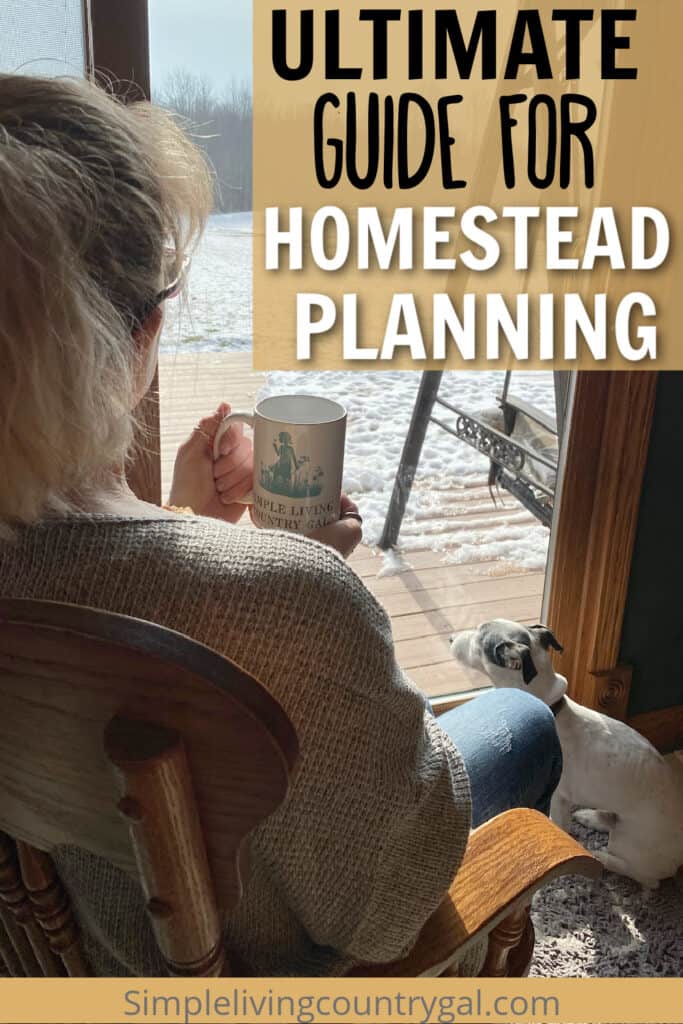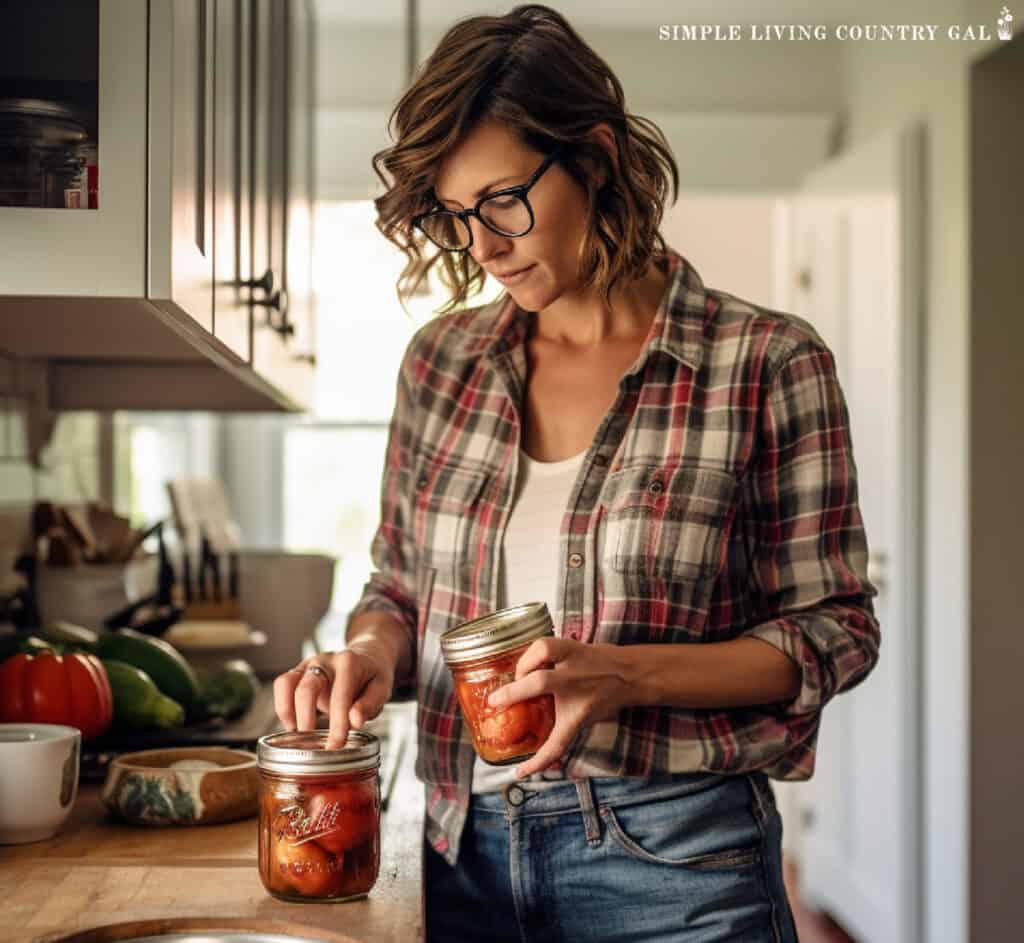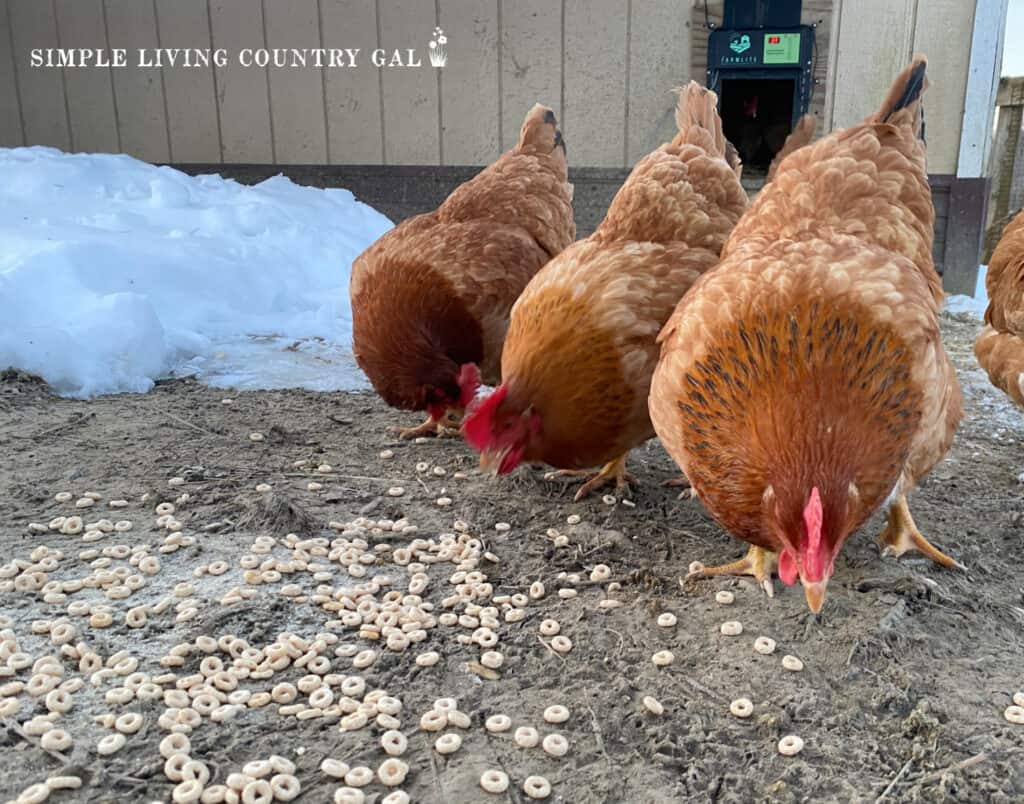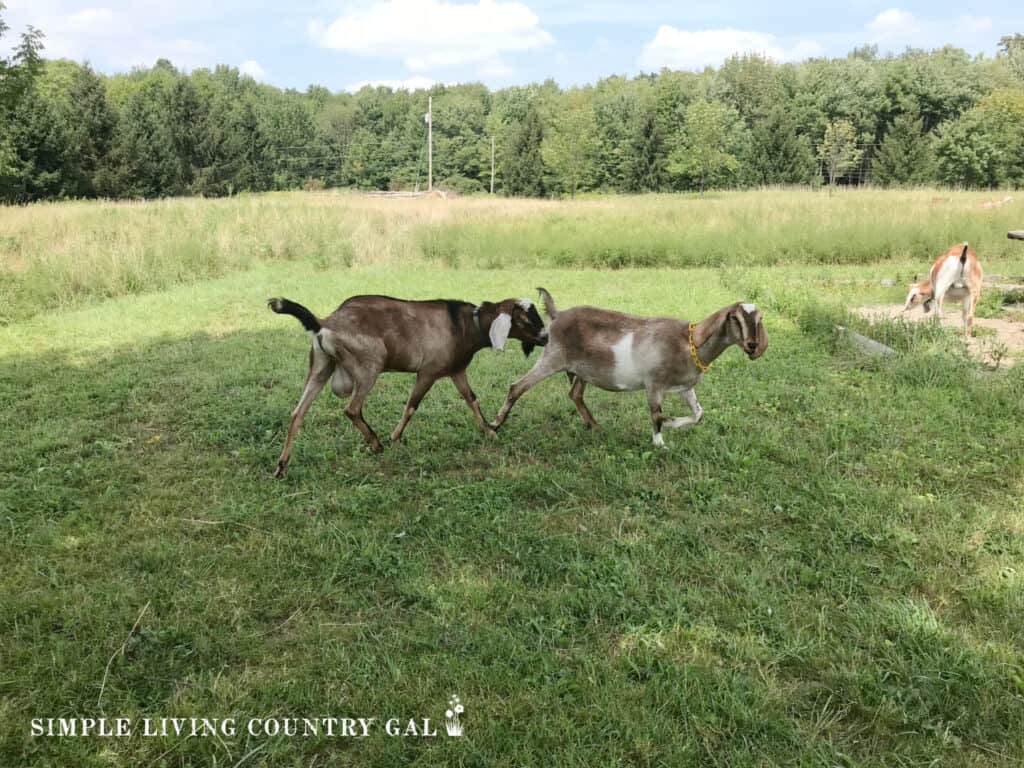Homestead Planning
Homesteading is a great way of life, but it also requires a lot of work and attention. Attention that involves hands-on work and planning. Many times, the area of homestead planning gets overlooked, and that can keep your setup from growing and evolving along with your family and goals.
Homesteading tips are great, especially when they help you to make the most of your time efficiently. And if you want to be efficient, then planning should be on your list.

I am not a fan of super cold weather, and that means in the winter, I tend to stay indoors where it is warmer. But there is one part of winter I do enjoy, and that is planning for the upcoming year. By having a schedule of projects, goals, upkeep, and growth, our homestead continues to improve annually.
What does it mean to have a homestead?
Having a homestead means doing what you can to live off the land and being self-sufficient with food and other resources. It means doing your best to stay out of the stores by growing it, raising it, or making it so you don’t have to buy it. Homesteading is a way of life that promotes simplicity and self-reliance both inside and outside of the home.

Why is planning important for a homestead?
No matter what size your homestead is, planning is important for several reasons.
- It helps you stay organized and focused on your goals.
- When you have a plan in place, you’re less likely to get sidetracked or overwhelmed by the tasks at hand.
- Planning allows for efficient use of resources, whether it be time, money, or land space.
- By having a schedule and budget in place, you can make sure your homestead is sustainable and doesn’t become a financial burden.
- Planning also allows for room to adapt and change as needed, ensuring your homestead stays relevant and successful.
As you can see, planning is more than making a list of goals for the year ahead; it’s about being self-sufficient in what you do so you are using your time and tools wisely and efficiently.
Homesteading Books We Love:
Heaven’s Harvest Survival Seed Bank Kit (Over 25,000) Fruit & Vegetable Non-GMO Heirloom Seeds for Planting a 3+ Acre Home Garden. 100% Secure: Emergency Weather-Proof Bucket (1-Pack)


What are the different areas of a homestead?
A homestead can encompass many different areas depending on your goals and resources. Some common areas include:
- Garden/Orchard: This is where you grow your own fruits, vegetables, herbs, and other edible plants. It can range from a small raised bed to a large plot of land with multiple crops.
- Livestock/Poultry: Raising animals for food or other resources is a key aspect of homesteading. This can include chickens, goats, pigs, cows, bees, and more.
- Food Preservation: Once you have grown or raised your own food, it’s important to preserve it for later use through methods such as canning, freezing, dehydrating, and fermenting.
- Home Maintenance: A homestead also requires upkeep and maintenance of buildings, equipment, and tools.
- Energy Production: Many homesteaders aim for self-sufficiency in terms of energy production. This can include solar panels, wind turbines, or other alternative energy sources.
- Water Management: Collecting rainwater, digging a well, or using a natural water source can help provide water for your homestead needs.
- Composting: Reusing what you have to help improve the soil in your area, giving you a more robust garden and orchard.
- Community Involvement: Homesteading can also involve participating in local farmer’s markets, community-supported agriculture programs, or other forms of collaboration with other homesteaders.
- Education/Education: Learning and teaching about sustainable living practices, traditional skills, and self-sufficiency is a key component of homesteading.
- Emergency Preparedness: As homesteading often involves living off-the-grid and being self-sufficient, being prepared for emergencies and natural disasters is crucial.
- Self-Sufficiency: Homesteading promotes self-reliance and the ability to produce one’s own food, energy, and other resources. This can also include skills such as sewing, carpentry, and basic medical care.
- Mindful Living: Homesteading encourages a more intentional and mindful way of living, with a focus on sustainability and reducing waste.

Homestead Planning for Next Year
Use the winter months to plan and prepare for next year in each area of your homestead.
Gardening – Plan next year’s garden.
- Map out your garden being sure to rotate crops to keep the soil healthy.
- Take inventory of your seeds, make a list of what you need to restock, and order early enough to start any seedlings indoors.
- Make a schedule of when to start each seedling indoors so they are ready for planting come spring.
More Garden Reads:
Chickens
- Determine if you need to restock your flock.
- Research breeds that are best suited for your needs and climate.
- Make plans for brooding and raising chicks if necessary.
- Prepare or improve housing, fencing, and other necessary infrastructure for your chickens.
Bees
- Plan to order bees early in the winter so they arrive in time for spring.
- Research and plan out new hive locations if necessary.
- Make sure you have all the necessary supplies and equipment for your beekeeping activities.
Goats
- Decide if you need to add or cull any goats from your herd.
- Make plans for breeding and kidding season.
- Prepare and improve housing, fencing, and other necessary infrastructure for your goats.

Barn and Buildings
- Plan out what projects you need to do in the upcoming year.
- Break each project out by the month and list any supplies you will need.
- Budget money needed to complete so you can start saving now.
Home Maintenance
- Make a list of any repairs or renovations needed in and around your home.
- Prioritize the items on the list and plan out when you will have time to complete them.
- Budget for any necessary materials or services.
Composting and Waste Management
- Review your current composting system and make any necessary improvements or adjustments.
- Consider adding a worm farm or vermicomposting bin to your composting routine.
- Look into any local programs or services for recycling and proper disposal of household waste.
More Compost Tips:
Education/New Skills
- Think about any new skills or knowledge you want to learn related to your homestead.
- Research classes, workshops, or online resources that can help you gain these skills.
- Set aside time each month for learning and practicing these new skills.
Mindful Living
- Take time to reflect on your current habits and daily routines.
- Identify areas where you can make small changes to live a more sustainable and mindful lifestyle.
- Experiment with different practices such as reducing waste, conserving energy, or practicing self-care activities.
- Write about your experiences and progress in a journal to track your growth over time.
Food Preservation
- Take inventory of any food that is still stored from this year and plan to use it before next season’s harvest.
- Make a list of necessary supplies for canning, dehydrating, or other preservation methods.
- Plan out which foods you want to preserve and make a schedule for when to do so.
Emergency Preparedness
- Review and update your emergency plan, including evacuation routes and necessary supplies.
- Make sure to have a well-stocked first aid kit and any necessary medications.
- Consider taking a course in CPR or other emergency response skills.
Self-Sufficiency
- Look into ways to increase your self-sufficiency, such as growing more of your own food or generating your own energy.
- Research alternative energy sources like solar panels or wind turbines.
- Consider raising backyard chickens for eggs and/or meat.
Overall Homestead Goals
- Make a list of overall goals for your homestead, such as increasing self-sufficiency or improving sustainability.
- Break down each goal into smaller, actionable steps and create a timeline for completing them.
- Regularly evaluate and adjust your goals and plans to ensure they are realistic and achievable.
Winter is a great time to prep for the new season. By planning, prepping, and learning new skills, you will start the spring with a renewed sense of purpose and a clear plan. Take the months indoors to do your homestead planning, and create a schedule you can follow along to all year long.




